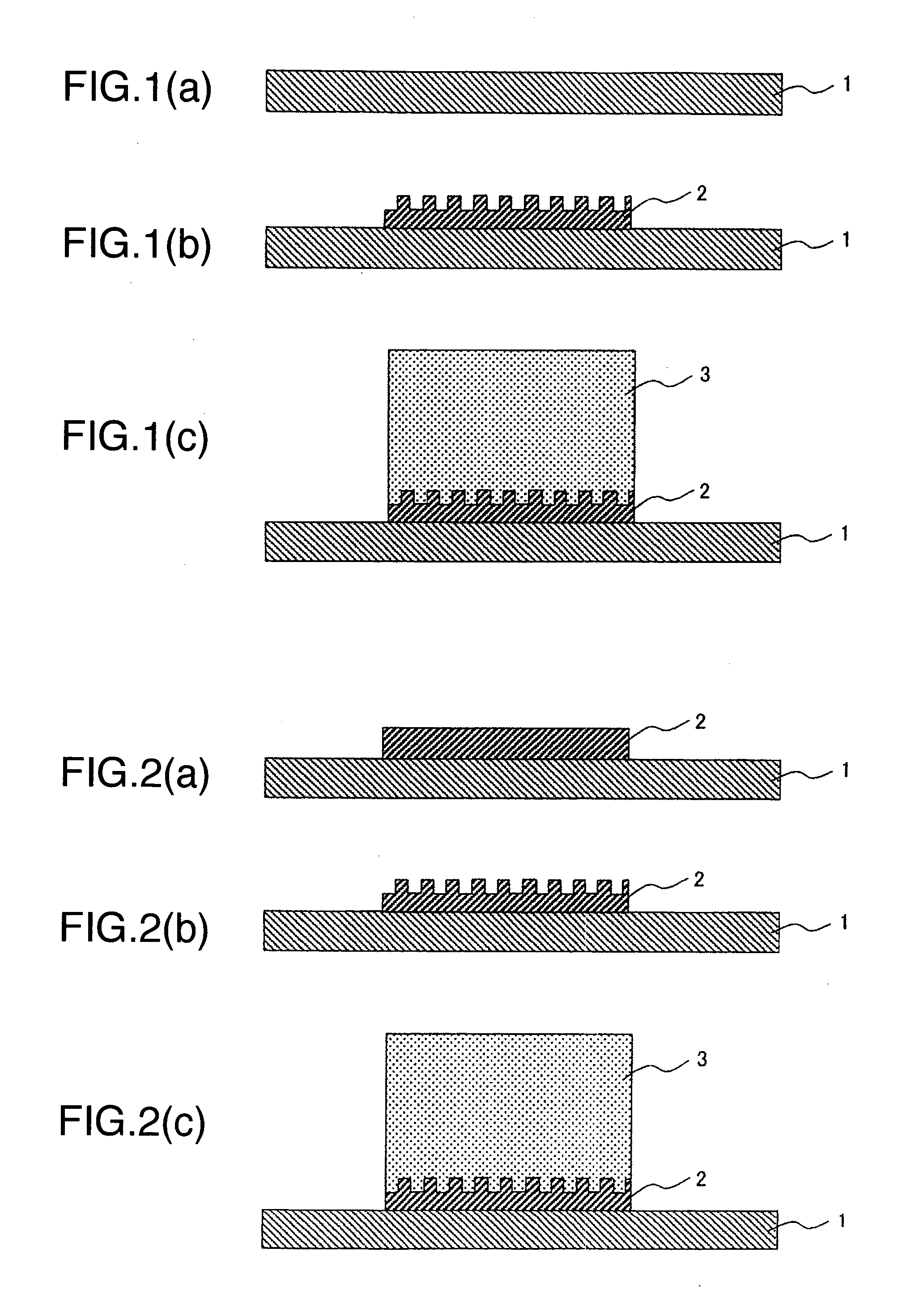Wiring board and production method thereof
- Summary
- Abstract
- Description
- Claims
- Application Information
AI Technical Summary
Benefits of technology
Problems solved by technology
Method used
Image
Examples
example 1
[0044] A solution containing dispersed silver particles with an average diameter of 20 nm was sprayed with an ink jet technique onto a surface of an insulating substrate 1 (Kapton EN made by Du Pont-Toray Co., Ltd.) made of polyimide film with a thickness of 25 μm shown in FIG. 1(a) to form a metal seed layer 2 with a wiring width of 20 μm and a thickness of 0.2 μm as shown in FIG. 1(b). Then, the insulating substrate was heated to a temperature of 200° C. to fuse the silver particles. As the insulating substrate, it is possible to use not only the polyimide but also a resin of polyester, class epoxy, phenol, and aramid, ceramics, and glass. As the particles, it is possible to use metal particles of platinum, gold, copper, nickel, tin and the like, other than silver. The roughness on the surface of the metal seed layer formed by the silver particles was measured with a surface roughness measuring apparatus. The measurement showed that the surface roughness of the metal seed layer ha...
example 2
[0048] A metal seed layer 2 with a wiring width of 10 μm was formed as shown in FIG. 2(a) through a mask with a sputtering technique on a surface of an insulating substrate 1 (Upilex S made by Ube Industries Ltd.) made of polyimide film with a thickness of 25 μm shown in FIG. 2(a). The metal seed layer was made of two layers: a nickel film with a thickness of 0.01 μm formed on the substrate and a copper film with a thickness of 0.5 μm formed on the nickel film. As the metal seed layer, it is possible to use not only the stacked film of nickel and copper but also a stacked film of chromium and copper. Then, copper roughening processing was performed to form a roughened shape on the surface of the copper film as shown in FIG. 2(b). The metal seed layer in FIG. 2(b) is made of the two layers, although not shown. The copper roughening processing was performed by using MultiBond made by Nippon MacDermid Co., Inc. in accordance with steps shown in Table 3. As a solution used copper roughe...
example 3
[0051] As shown in FIG. 3(a), a nickel film with a thickness of 0.1 μm formed on a surface of an insulating substrate 1 made of glass epoxy resin and a copper film with a thickness of 1.0 μm was formed with the sputtering technique on the nickel film. Next, copper roughening processing was performed to form a rough area in the portion of the copper surface on which wiring was to be formed, thereby providing the shape shown in FIG. 3(b). The rough area was formed with sandblast. The sandblast was performed by spraying alumina particles onto the copper surface through a mask pattern with a wiring width of 8 μm. The roughened shape on the copper surface after the sandblast processing was measured with a surface roughness measuring apparatus. The measurement showed that the surface roughness of the metal seed layer had an arithmetic average roughness Ra (defined in JIS B0601) of 0.4 μm and an average length of a roughness curve element RSm of 1.1 μm. Electroplating was performed immedia...
PUM
 Login to View More
Login to View More Abstract
Description
Claims
Application Information
 Login to View More
Login to View More - R&D
- Intellectual Property
- Life Sciences
- Materials
- Tech Scout
- Unparalleled Data Quality
- Higher Quality Content
- 60% Fewer Hallucinations
Browse by: Latest US Patents, China's latest patents, Technical Efficacy Thesaurus, Application Domain, Technology Topic, Popular Technical Reports.
© 2025 PatSnap. All rights reserved.Legal|Privacy policy|Modern Slavery Act Transparency Statement|Sitemap|About US| Contact US: help@patsnap.com



